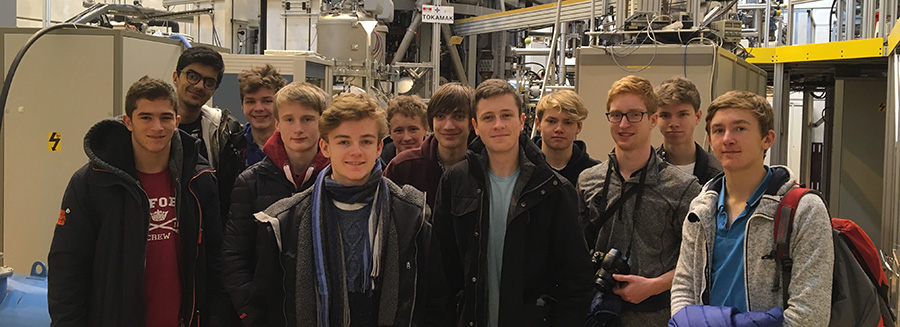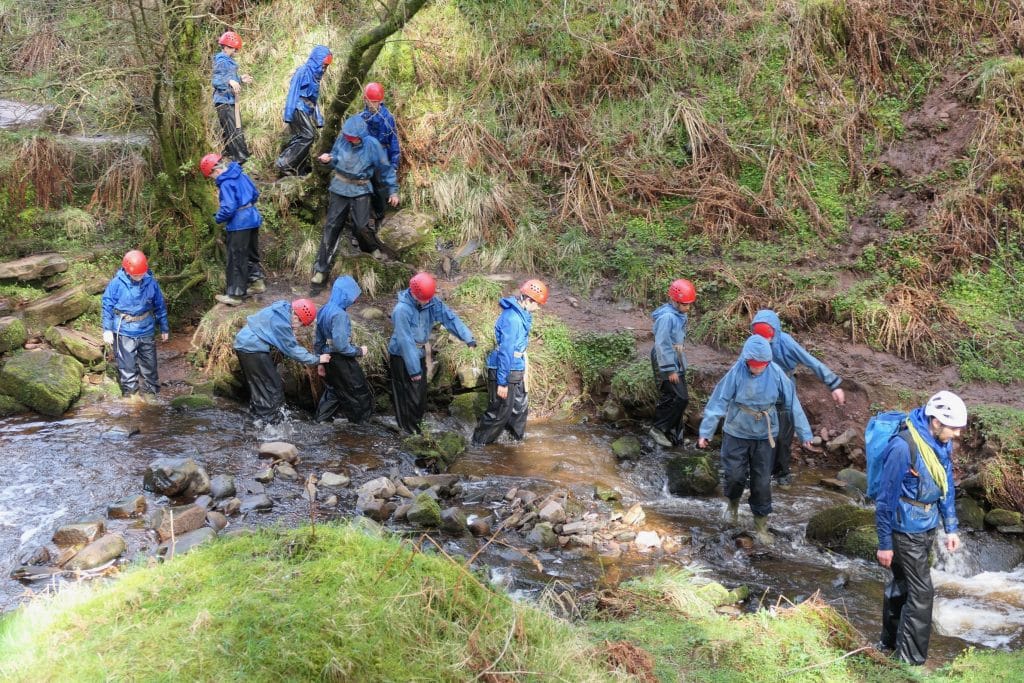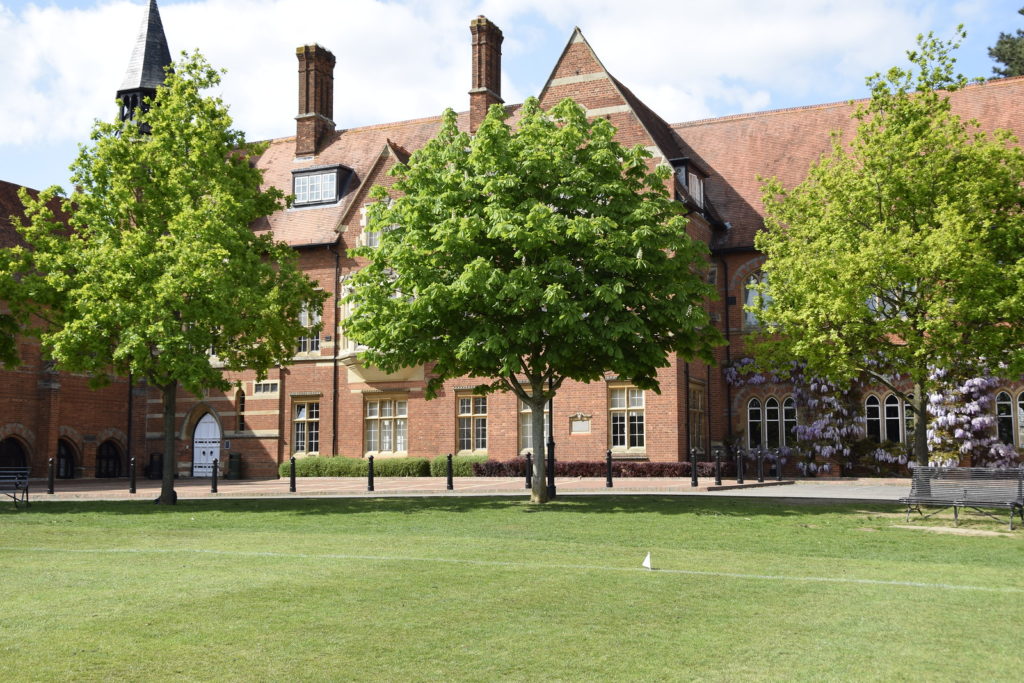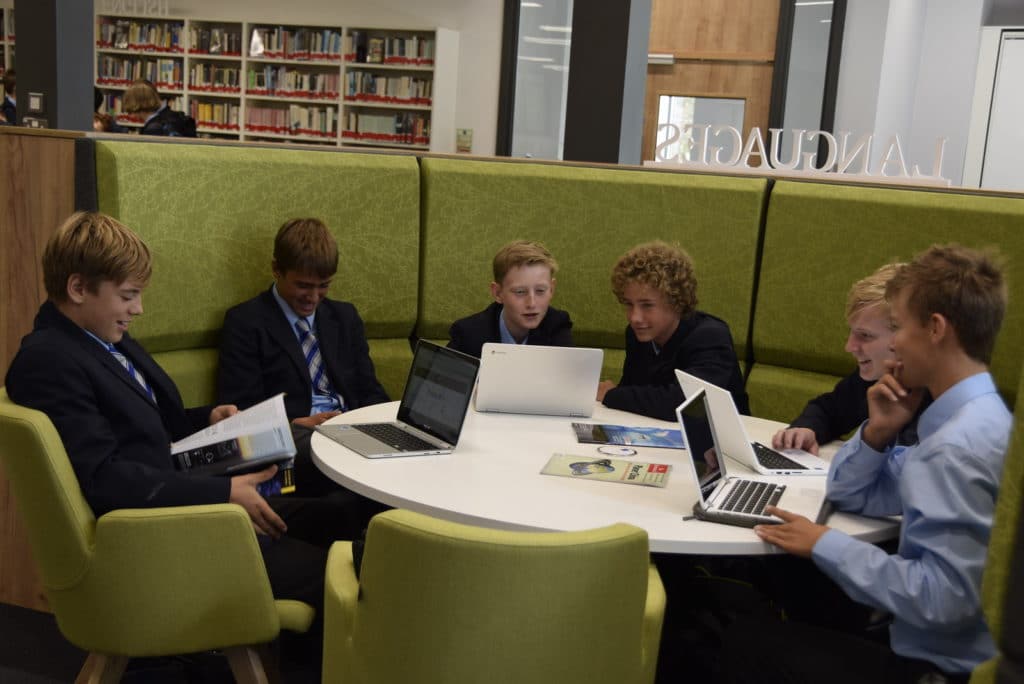8 January 2018
During the christmas break myself and other pupils from Abingdon School went to Geneva in Switzerland to visit the fantastic physics facilities that the country has to offer. During my time there I learnt about the historical significance of Switzerland in the development of science and got to see the cutting edge technology that is pushing forward the boundaries of modern physics.
On our arrival into Geneva we participated in a walking tour of the old town with buildings dating back to the 12th century and the ruins of roman temples dating back to the 1st. The maze of small streets and picturesque squares overlooked the Lake including the Jet d’Eau, a massive water jet stretching 140m high and throwing 7000 litres of water into the air at any given time. Having visited the old town we took the tram service that runs through the streets of Geneva to the History of Science museum. Here many important artifacts are kept showing the history and development of scientific instruments made in Geneva, many of which are from the original observatory founded by Jacques-André Mallet in 1772. The telescopes found here played an important role in the development of Genevan society. They allowed the accurate study of the night sky which attracted many scientists who did not want to make the long trip to Paris or Greenwich. Even more important than this however, was the implication that telescopes had on time keeping. The big problem faced by sailors in the 18th century was that there was no easy way of knowing your location at sea, the solution to this problem was to create books of data and coordinates that could be taken on the ship and were used by referencing the location of significant stars in the sky. In addition, the focus on accurate time keeping allowed watch makers to calibrate all their watches to an unmatched standard. It was fascinating to see how one building was crucial to making Geneva what it is today.
The following day we again took the tram service but this time to visit the Conseil Européen pour la Recherche Nucléaire or CERN. There are a multitude of experiments conducted at CERN and we were lucky to see one of them, the LHC. The LHC or Large Hadron Collider is the world's largest and most powerful particle accelerator even making mainstream headline news with the discovery of the Higgs boson in July 2012. The 22 member countries of CERN spent around 1 billion euros in building the equipment and conducting the experiments. Protons which are subsidiary components of the nucleus of atoms are accelerated by supercooled Niobium-Tin magnets to 99.99999991% of the speed of light around a 27 Km tunnel, they make this journey 10,000 times a second. The protons are sent in packets so that an alternating magnetic field will boost their speed, one packet is sent clockwise and the other counter clockwise, they collide at set points where the detectors are placed. When they collide a lot can happen, through Einstein's famous E=mc2 equation, energy and matter are related so the smashing of two packets of protons creates a lot of energy and subsequently lots of different particles to be released. Now the job of the massive detectors and even bigger supercomputers is to try and figure out what happened. For every 1 billion billion protons that collide only 1000 Higgs particles are produced so the chance of observing one is very low, luckily there are 600 million collisions per second to increase the chances, the downside of having so many collisions is that there is a huge amount of data that needs to be processed at the data centre, so much so that it has to export its data to other supercomputers. The astronomically large numbers associated with the LHC were awe-inspiring and truly it’s a marvel of modern technology.
Other interesting things that we saw included the Geneva Plasma Physics Centre studying the stability of plasma for use in fusion systems helping to research how to effectively achieve nuclear fusion in power plants such as ITER and DEMO. The new Geneva observatory responsible for finding many new exoplanets and housing modern telescopes far more advanced than that of the telescopes found in the museum. The SeuJet hydroelectric dam helping contribute to producing 56% of swiss electricity with the other two hydroelectric dams in the country, it had heavy emphasis on being environmentally friendly, finding ingenious solutions to the problems of hydroelectric power for example making stairways for beavers to cross between the two sides. As well as exploring the sites from Geneva we traveled to the city of Bern to visit the Einsteinhaus the actual apartment that Einstein published arguably his three most important works; his paper on the photoelectric effect which won him the nobel prize in 1921, his paper on brownian motion and finally his paper on special relativity which changed the way physicists looked at the wold.
Overall I learnt so much during the time in Switzerland, it is amazing how you can study the largest objects in space in the Geneva observatory and only a few miles away you can probe the smallest objects in the universe at CERN. The history of science in Switzerland is rich and it continues to make history today as more work is being done at the University of Geneva in all areas of science. The trip has inspired me to further my understanding of particle and plasma physics and I would highly recommend visiting.
Written by Robert Smith





